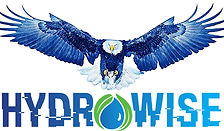This post discusses:
Where and Why IoT fits into Agriculture
Possible Road Blocks: Price, Range, Power, Infrastructure
Studies show there is a potential for water savings of over 50% with sensor-based irrigation scheduling methods. Informed irrigation decisions require real-time data from networks of soil and weather sensors at desired resolution and a reasonable cost. Wireless sensor networks can collect data on plants in a lot of detail in areas of the field that behave differently. The need for wireless sensors and actuators has led to the development of IoT (Internet of Things) solutions referred to as Low-Power Wide-Area Networking or LPWAN. IoT simply means wireless communication and connecting to some data management system for further analysis. LPWAN technologies are intended to connect low-cost, low-power sensors to cloud-based services. Today, there are a wide range of wireless and IoT connectivity solutions available raising the question of which LPWAN technology best suits the application?

IoT Implementation Scenarios
The following are scenarios for implementing IoT:
1) buying a sensor that is going to connect to a wireless network that you own (i.e., customer supplied like Wi-Fi, Bluetooth),
2) buying the infrastructure or at least pieces of it to install onsite (i.e., vendor managed LPWAN such as LoRaWAN, Symphony Link), and
3) relying on the infrastructure from a network operator LPWAN (e.g., LTE Cat-M1, NB-IOT, Sigfox, Ingenu, LoRWAN).
This is how cellular network operators or cellular IoT works. LPWAN technology fits well into agricultural settings where sensors need to send small data over a wide area while relying on batteries for many years. This distinguishes LPWAN from Bluetooth, ZigBee, or traditional cellular networks with limited range and higher power requirements. However, like any emerging technology, certain limitations still exist with LPWAN.
IoT Strengths and Limitations
The average data rate in cellular IoT can be 20 times faster than LoRa or Symphony Link, making it ideal for applications that require higher data rates. LTE Cat-M1 (aka LTE-M), for example, is like a Ferrari in terms of speed compared to other IoT technologies. At the same time, sensor data usage is the most important driver of the cost in using cellular IoT. Individual sensor subscription fee in cellular IoT may add up and make it very expensive where many sensors are needed. This means using existing wireless technologies like traditional cellular or ZigBee to complement LPWAN.
One-to-many architecture is a common approach with respect to wireless communication and can help save the most money. Existing wireless technologies like Bluetooth LE, WiFi or ZigBee can be exploited to collect in-field data. In this case, data could be transmitted in-and-out of the field through existing communication infrastructure like a traditional cellular network (e.g., 3G, 4G) or LAN. Alternatively, private or public LPWAN solutions such as LoRaWAN gateways or cellular IoT can be used to push data to the cloud. Combination of Bluetooth, radio or WiFi with cellular IoT means you will have fewer bills to pay. It is anticipated that, with more integrations, the IoT market will mature, and costs will drop further.
Many of LPWAN technologies currently have a very limited network coverage in the U.S. LTE Cat-M1 by far has the largest coverage. Ingenu, which is a legacy technology, Sigfox and NB-IOT have very limited U.S. coverage. Some private companies are currently using subscription-free, crowd-funded LoRaWAN networks to provide service to U.S. growers: however, with a very limited network footprint. Currently, cellular IoT does not perform well in rural areas without strong cellular data coverage.
We will continue to discuss IoT strengths and limitations in part 2.
Reference
Osroosh, Y., Adhikari, D., 2018. Using the Power of IoT to Improve Irrigation Water Management. Irrigation Today, April: 6-7.

